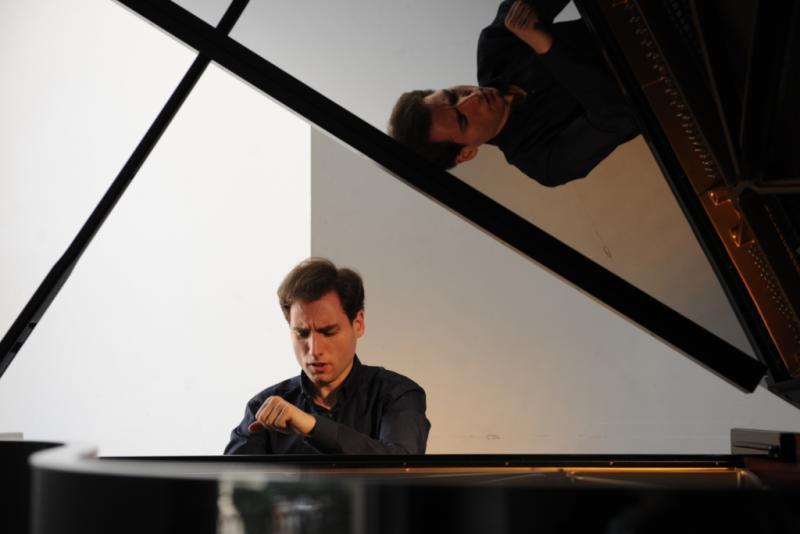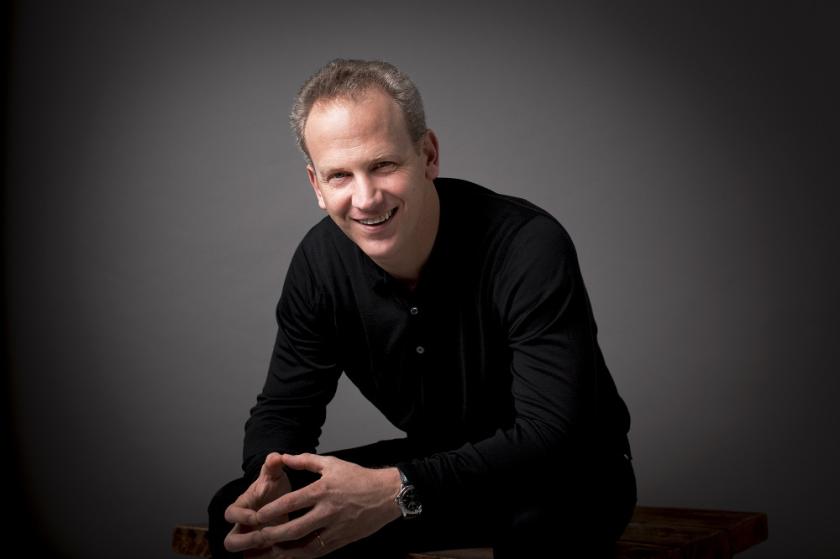To a freezing grey night in Scotland’s capital, the conductor Carlos Miguel Prieto brought a welcome ray of Mexican sunshine. Wearing a broad grin he marched onto the platform of the Usher Hall and launched into Rodion Shchedrin’s impish Concerto for Orchestra No.1, Naughty Limericks, with the Royal Scottish National Orchestra. As its title suggests, this short piece is virtuosic mayhem for a large orchestra: at first hearing it has the swagger and tomfoolery of Gershwin’s An American in Paris but with the admixture of an earthy bawdiness that is totally Russian.
Prieto, a tall man, conducts with evident good humour, swaying slightly and employing a range of spare, elegant hand gestures. Many in the orchestra were smiling, barely containing their laughter at the riotous invention: bows tapped on music stands, farting noises from the brass, the piano adapted to sound like a balalaika with paper on the strings, all swept along at a jaunty pace by a brushed sidedrum. But aside from all the fun, Shchedrin’s music, based on Soviet folk tunes, is beautiful too.
Giltburg's performance was quietly mesmerising throughoutThere was more quirky humour to come after the interval, with Shostakovich’s Sixth Symphony, but at the heart of the evening’s programme lay a performance on an altogether different scale, Rachmaninov’s Third Piano Concerto, his longest, and possibly the most technically challenging of all the great romantic concertos. To my mind any pianist who is capable of getting from start to finish deserves a medal, but in this performance the Russian pianist Boris Giltburg added yet another dimension to this monumental work. Hunched over the keyboard, he brought to his opening phrases an almost organic sense of growth, as the natural fluidity of the melody blossomed into more expansive gestures. In the softer passages – and much of the concerto was played more sotto voce than usual – it seemed as though his fingers merely brushed the keys to produce a sound so gentle that it brought to mind bubbles rising from a reef in a clear blue sea.
The Third Concerto does not have the thick creaminess of the second -- its harmonies are slightly bleached, the melodies less crunchy, but it has a grandeur and scale all of its own. Giltburg’s performance was quietly mesmerising throughout. Occasionally he would uncoil and raise his head from the keyboard to give his hands room for the grander passages, but even in those moments of breathtaking virtuosity, when it seems as though the pianist must have as many hands as fingers, it was all about melody and grace, never a hint of aggression.
 Towards the end it became clear just how carefully both Prieto (main picture) and Giltburg (pictured right) had crafted this interpretation. For the great closing peroration Giltburg suddenly increased his volume and attack, pushing the tempo forward. Prieto followed, and in a magical moment expanded the string sound into its first true fortissimo of the performance – little did we realise until then how much he had been holding things in check. To uproarious applause, Giltburg returned to the platform with a ferocious account of Prokofiev's Suggestion diabolique as encore.
Towards the end it became clear just how carefully both Prieto (main picture) and Giltburg (pictured right) had crafted this interpretation. For the great closing peroration Giltburg suddenly increased his volume and attack, pushing the tempo forward. Prieto followed, and in a magical moment expanded the string sound into its first true fortissimo of the performance – little did we realise until then how much he had been holding things in check. To uproarious applause, Giltburg returned to the platform with a ferocious account of Prokofiev's Suggestion diabolique as encore.
Sandwiched between the equally famous and popular Fifth and Seventh Symphonies, Shostakovich’s Sixth is a bit of a puzzle. It says something about the innate conservatism of musical expectation that even 80-odd years after the premiere we are still slightly nonplussed by a symphony whose opening Largo is substantially longer than the two short fast movements that follow. Whilst he was writing it Shostakovich claimed that he was working on a grand choral masterpiece in praise of Lenin – one can only guess that he hoped to defuse official criticism by making the symphony hard to decipher in terms of conventional symphonic narrative.
The amiable Prieto showed us his more serious side in the Largo. This was a beautifully realised account of a difficult movement with little respite from an overriding sense of bleakness. Frequently the music comes to a near standstill, as though it would die away completely but for a plaintive Mahlerian figure in the woodwind. When the music finally stopped, it seemed to me blindingly obvious that Shostakovich could have left it there, as a one-movement symphony – a nihilistic answer to Sibelius, whose Seventh takes just one movement to come to a much more radiant conclusion.
In the event, of course, we had two further movements, both fast, both highly virtuosic, and it was no surprise by now to find that Prieto relished the speed, noise, and (in the final Presto) the buoyant sense of exuberance. There’s a nod in the direction of Rossini’s William Tell, a football chant, and even what you might call a pre-echo of the “drunken sailor” finale of the Second Piano Concerto.
If this brought the house down, it was nothing to Prieto’s encore, a gloriously vulgar waltz by Jimenez - the Intermezzo from La Boda de Luis Alonso. This was pure showmanship: the array of percussion included castanets, a paella pan, and Prieto’s own head, to which he delivered a very audible thwack with his knuckle. The waltz swerves, pauses and accelerates with abandon – Prieto engaged his players (and us in the audience) in an atmosphere closer to the Last Night of the Proms than the Usher Hall on a winter night. Even though Giltburg proved the undeniable star turn of the evening, it was Prieto who stole the show for his ability to conjure from this orchestra such virtuosity and an undeniable sense of fun.














Add comment